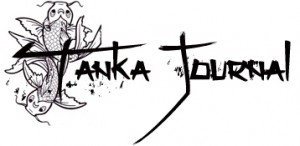Elsewhere on our website, we discuss what tanka poems are, and even include a recipe for composing tanka. So few people know tanka poetry well, and we urge you to imagine a tanka poem as two tercets with a shared line. The experience tercet expresses an experience and then turns (pivots) on the third line. The reflective tercet begins with the third line and expresses a reflective meaning.
Line One
Line Two
Line Three (pivot)
Line Four
Line Five
Consider this tanka by Tim Gardiner:
smothering yellow primroses
swept away by the wind
the joy of a spring wedding
so quickly forgotten
The experience tercet reads:
pale blue confetti
smothering yellow primroses
swept away by the wind (tonal change)
Then the reflective tercet reads:
swept away by the wind
the joy of a spring wedding
so quickly forgotten
and together it is a complete 5 line tanka.
This is a general explanation to guide poets. It’s expressed more deeply, using different terminology and complex ideas, in poetry classes and history books, but for those who are recently acquainted with tanka, this may be a good way to think about it.
